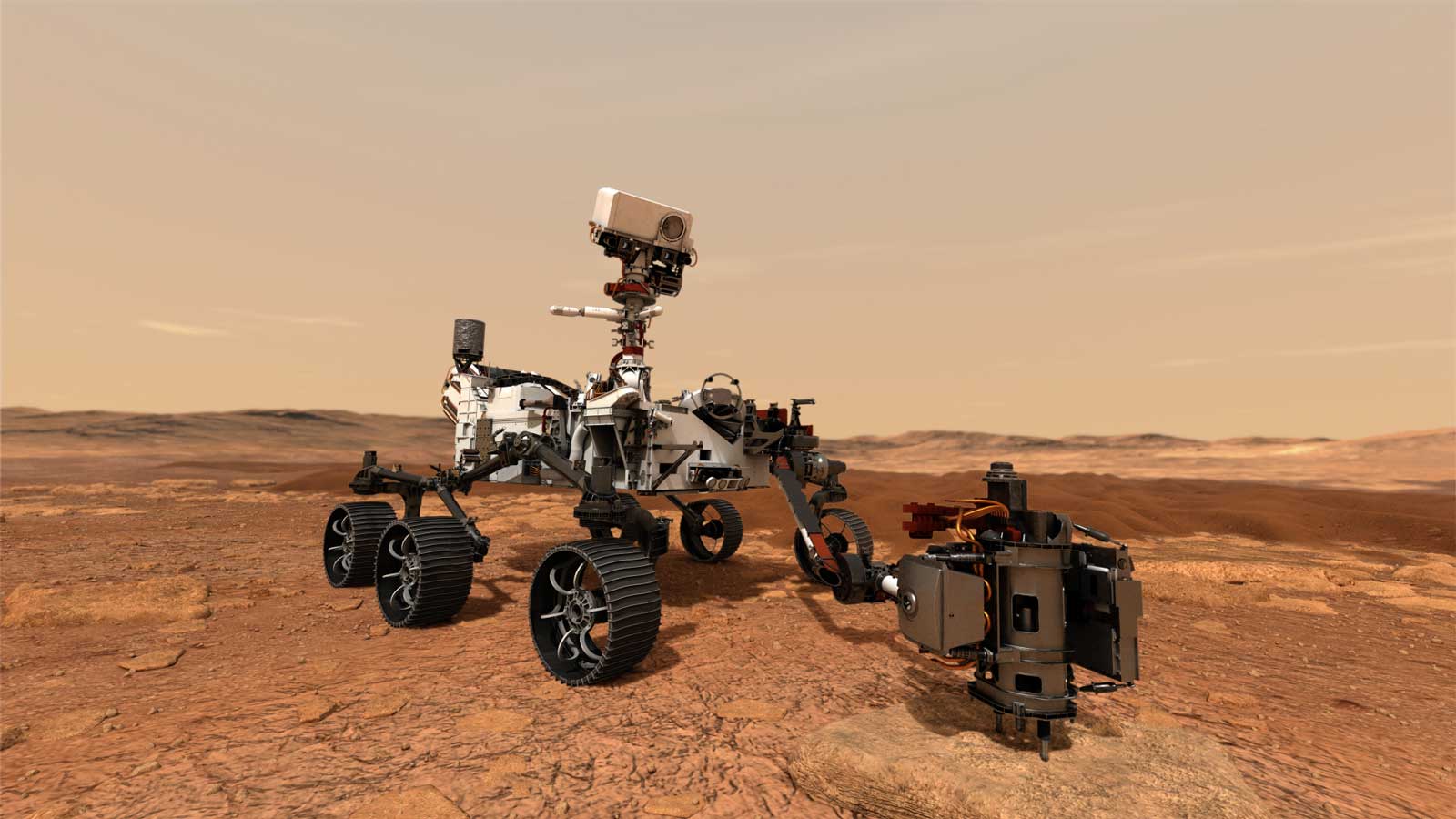It’s the season for going to Mars and the latest to make the journey will be NASA’s Perseverance rover.
It will be joining UAE’s Hope mission and China’s Tianwen-1 at the red planet in February 2021.

Tianwen-1 consists of both an orbiter, lander and rover. Tianwen means ‘questions to heaven’ and is taken from the name of a poem by poet and politician Qu Yuan.
This combination of spacecraft has never before been launched to Mars (or indeed any other planet). The Chinese lander/rover will touch down a few months after the spacecraft reaches the red planet, landing in an area called Utopia Planitia on Mars’s Northern hemisphere (the same location as NASA’s Viking 2 lander).
The United Arab Emirates’ Hope (or al-Amal) orbiter also launched recently and will study the Martian atmosphere and climate. This is the first interplanetary mission developed by an Arab state.
Hope will orbit further out than any previous mission, observing the changing seasons during the Martian year from high above the equator.
However, Perseverance is a little different to both these missions and indeed to any spacecraft sent to Mars in the last half century.
Perseverance will be the first step of an astonishingly ambitious programme to bring samples of Martian rock back to Earth.
This has never been done before.
Ideally, these samples would be collected by astronauts, but plans to send humans to Mars are still at a very early stage. Robotic sample return missions have already successfully visited a comet and an asteroid, and in the early 1970s the Soviet Union retrieved lunar samples by robotic spacecraft on three occasions.

Sample return missions allow alien rock and soil to be analysed using sophisticated scientific instruments in laboratories on Earth, rather than the smaller equipment that can be squeezed into a spacecraft.
The big question they will be seeking an answer to, with the data provided by Perseverance, is whether life ever existed on Mars. If the scientific results suggest it did then the likelihood of life being found throughout the universe is great indeed.
The sample return programme being kicked off by Perseverance will involve three separate spacecraft. The Perseverance rover will trundle around the landing site, collect samples by drilling down into the surface and then leave them in tubular containers on the surface.

A few years later a second rover – this one built by the European Space Agency – will collect the cached samples and transfer them into a small rocket that landed with the second rover. The rocket will then blast off from the Martian surface and dock with a third spacecraft orbiting Mars which will bring the samples back to Earth.
The action will take place on Mars in Jezero crater. Almost 50 km wide, it was once flooded with water but is now an arid, dusty bed of clay. When a lake this crater might have provided the necessary conditions for life which would have left mineral traces in the clay sediments when the water disappeared.

As exploring Mars by robotic rover is a slow process, Perseverance’s landing platform will also be carrying a helicopter called Ingenuity.
If this little aircraft works, then future missions will be able to cover more ground far more quickly. Ingenuity will make use of new technologies that allow its large rotor blades to spin extra quickly to generate the necessary lift (in an atmosphere far less dense than Earth’s) to get it off the ground.
Another experiment that may prove useful for future missions to Mars will attempt to produce small quantities of oxygen from the carbon dioxide of Mars’ atmosphere. If successful, it will pave the way for producing far larger oxygen quantities which could be used by astronauts to breathe and to make rocket propellant. This would mean far less propellant would need to be taken to Mars for return journeys to Earth.
But in the meantime all eyes (and Perseverance’s 19 cameras) will be on what our robotic emissaries will bring back from Mars. We may finally be able to answer the question of whether we are alone in the universe, or if Earth is just one of a myriad of living worlds.
From rockets to satellites, probes to landers, discover objects that are out-of-this-world in our Exploring Space gallery.
